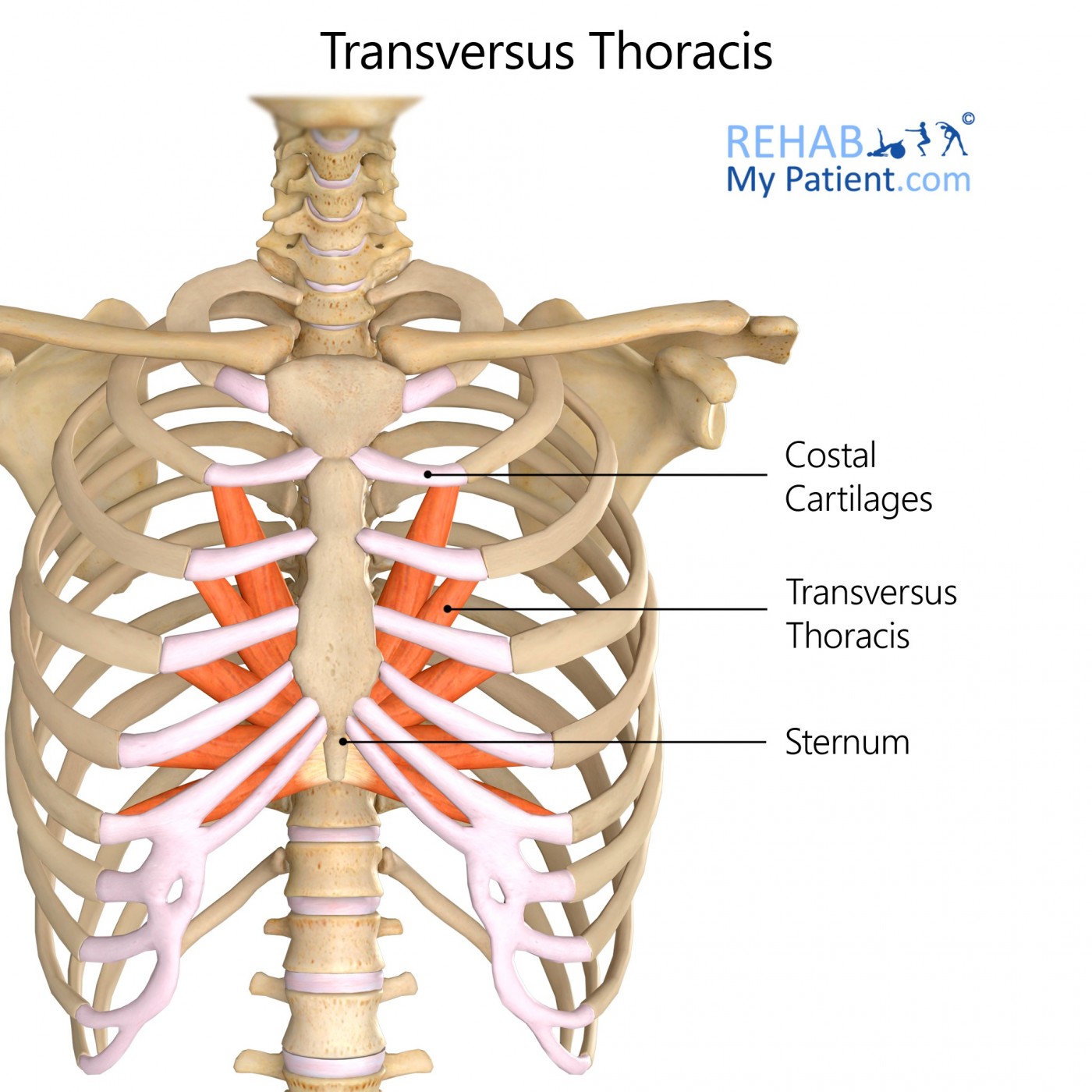Transversus Thoracis
Opublikowano dnia 30th Jul 2020 / Opublikowano w: Odcinek piersiowy kręgosłupa

General information
The transversus thoracis muscle is a thin muscle situated on the interior aspect of the anterior thoracic wall and its function includes pulling the rib cartilages caudally, in turn supporting expiration.
Literal meaning
The crosswise muscle of the chest.
Interesting information
This muscle’s insertional tendons contribute to its serrated appearance while the amount and insertion points appear to vary. This makes the transversus thoracis a highly variable muscle in the human body. Some of the variations include the merging of the transversus thoracis and transversus abdominus, which runs close to parallel to the transversus thoracis.
In respiration, this muscle is not a primary contributor as it is only slightly active in supine and also because in a lot of people this muscle is not well developed but they have no issues with breathing. Therefore, it is mainly considered to be an expiratory accessory muscle.
Origin
The dorsal surface of the xiphoid process and the body of the sternum.
Insertion
Five insertion tendons run craniolaterally to the cartilage of the 2nd to 6th ribs.
Function
Pulls the rib cartilages caudally, thus supporting expiration.
Nerve supply
Intercostal nerves arising from the thoracic nerves (Th2-Th6).
Blood supply
The sternal branches and anterior intercostal branches of the internal thoracic artery via the subclavian artery.

Relevant research
Recently, this muscle has been used in surgery as a site for analgesia. The transversus thoracis muscle plane block can be used for anterior chest wall operations such as breast and cardiac surgeries.
Fujii, S., Bairagi, R., Roche, M., & Zhou, J. R. (2019). Transversus Thoracis Muscle Plane Block. BioMed research international, 2019, 1716365.
Transversus thoracis exercises
None
Zapisać się
Zarejestruj się już teraz, aby skorzystać z bezpłatnego okresu próbnego!
Zacznij korzystać z Rehab My Patient już dziś i zrewolucjonizuj proces przepisywania ćwiczeń, aby zapewnić sobie skuteczną rehabilitację.
Rozpocznij 14-dniowy bezpłatny okres próbny